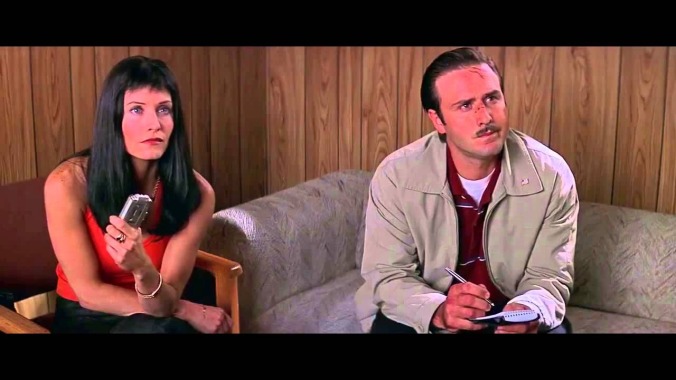Stranger Things 3 should go all in on the trilogy thing

Stranger Things sure felt like an anthology show when it premiered, from its nebulous, Twilight Zone-style title to the careful way it packaged its pulpy inspirations. You could imagine other seasons digging into other eras of horror and genre fiction, a sort of film-buff take on American Horror Story. The Duffer brothers originally pitched the show following the format of Stephen King’s It, with a massive time jump between the seasons, an idea they wisely ditched in order to more closely follow the kids who made the show a success. But an aspect of that anthologizing remains in the way the second season positions itself as a sequel, pulling inspiration not just from other sequels but from a whole new crop of films. This broadening of influences provided the season’s creative spark, and they should follow it through to its natural conclusion.
Where the first season was obsessed with the combined works of Spielberg and King, the second season’s liveliest moments come when the playbook evolves. The “demodog” nursing plotline is straight from Gremlins, until it turns into Jurassic Park, with a hyper-intelligent predator stalking helpless old Bob. The dank, subterranean action scenes throughout the military facility recall the best of Aliens or even Predator, a distinct maturation from the E.T. scramble of the first season’s climax. And while, yes, some of the show’s most explicit references remain too on the nose, the introduction of new characters, conflicts, and settings is a smart way to imbue the energy of filmic sequels into the slower-playing pleasures of serial television. Even Eleven’s foray into a cheesy, graffiti-strewn Chicago follows the sequel tradition of upping the ante by going to the big city, as seen in everything from Home Alone and Babe to Highlander and Jurassic Park.
Of course, this means they’re cribbing not from a hyper-specific era of pop culture anymore but from a larger movie-series playbook, which raises some interesting questions about what they’ll do for Stranger Things 3. A few (strange) things are certain, like the fact that the kids will be entering high school, the Mind Flayer will still be prowling around under the city, and Steve’s hair will require a team of dozens to properly operate. And a few plot strands are merely strongly implied by the sequel’s hanging threads, like the blooming of a relationship between Joyce and Hopper or the whereabouts of that demodog they stuffed in a freezer. People will probably start a campaign about Justice4Bob or whatever, so it’s safe to assume there’ll be a subplot about him, too.
But I’m much more interested in the widening of the Duffer brothers’ ambition, particularly as it relates to their most meta tendencies. What started as a narrow but rich homage to a specific set of cultural touchstones has the capacity to morph into a richer, more fun examination of filmic convention. They’ve said they’d like to wrap the whole series up in four or five seasons, but that sets them up for a bit of a predicament, in that films think in triplicate. There is a rich history of philosophizing about the structure of these broad popcorn trilogies, perhaps no better than that earlier meta-textual treatise on horror, the Scream series:
To continue the through-line established by Stranger Things 2, it’d make sense for any of this to happen—a return to the narrative beginning, an exorbitantly final death for the main bad guy, as well as the death of a major character (perhaps one who hadn’t just been introduced that season). We expect closure in third entries—think Alien, The Godfather, The Dark Knight, Star Wars, the Man With No Name trilogy, Toy Story, The Matrix—as well as an even further raising of the stakes. This would mean a hard conclusion to the primary story arc taking place at a seemingly galactic scale—utter finality, with nary a tentacle still quivering. The idea of three antagonists—Matthew Modine’s Martin Brenner, the Mind Flayer, and a rogue 8 playing as a sort of ideological antagonist, à la Magneto—could set up a tripartite climax as large as filmic trilogies generally dictate. (Think of Return Of The Jedi’s combination air, land, and lightsaber finale.)
This makes a lot more sense than the Duffer brothers continuing to move chronologically forward in sci-fi and horror filmic inspirations. Stranger Things 2 follows Spielberg’s career in the ’90s, but he took a sharp turn after Jurassic Park. Following The Matrix’s hyper-real take on digital age sci-fi, Spielberg trained his storytelling chops on a series of movies (War Of The Worlds, Minority Report, A.I.) that were grittier, filtered obsessively through the subjective experience of his protagonists. It’s unlikely that the decidedly analog narrative world of Stranger Things would follow him into that era, meaning that, in order to expand their story, they need to stay firmly within the ’80s and ’90s trilogy playbook. This has the added bonus of giving them a bunch of fun options for the fourth season: riffing on soft reboots (Alien: Resurrection), taking a hard-left narrative turn (Army Of Darkness), or even knowingly pandering with a nostalgic redux (Abrams-era Star Wars). Hey, maybe there are even some other kids out there they can hire.
The point is that, for better or worse, the triumphs of Stranger Things are ones of synthesis—seeing the Duffer brothers’ childhood influences smashed together and navigated by a group of likable protagonists. This dense stew of influences is what captured people in the first place, and it should dictate the road the show takes.